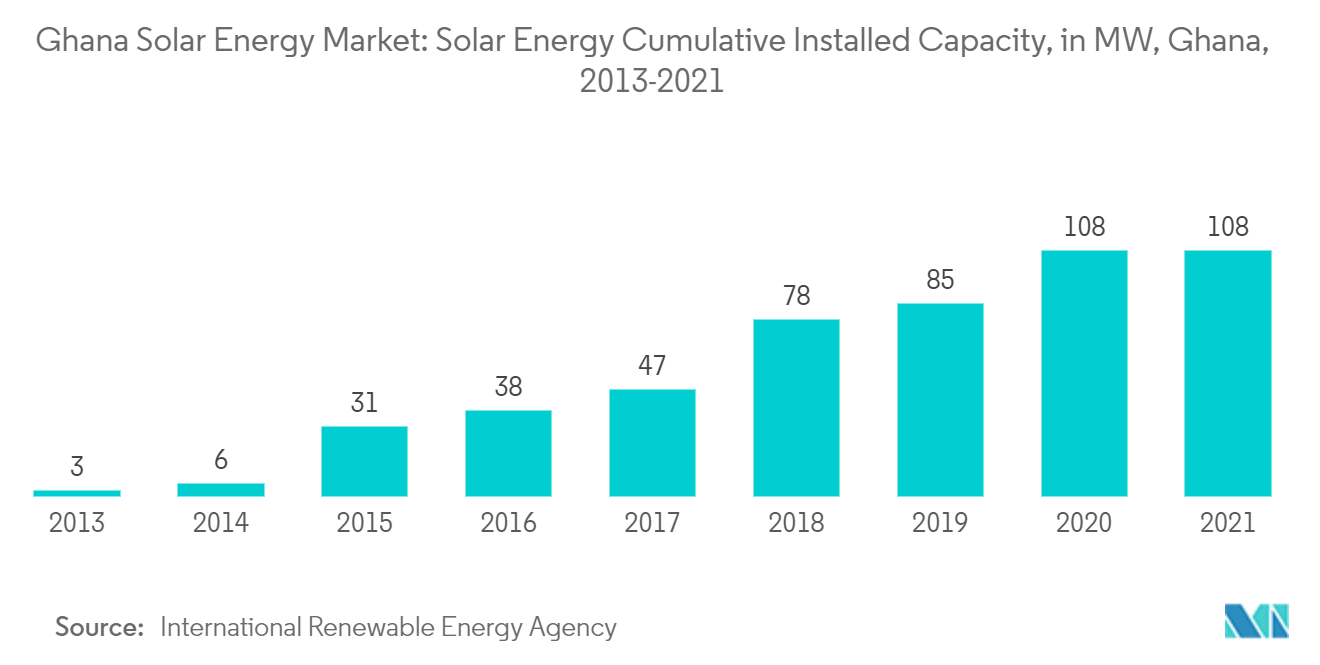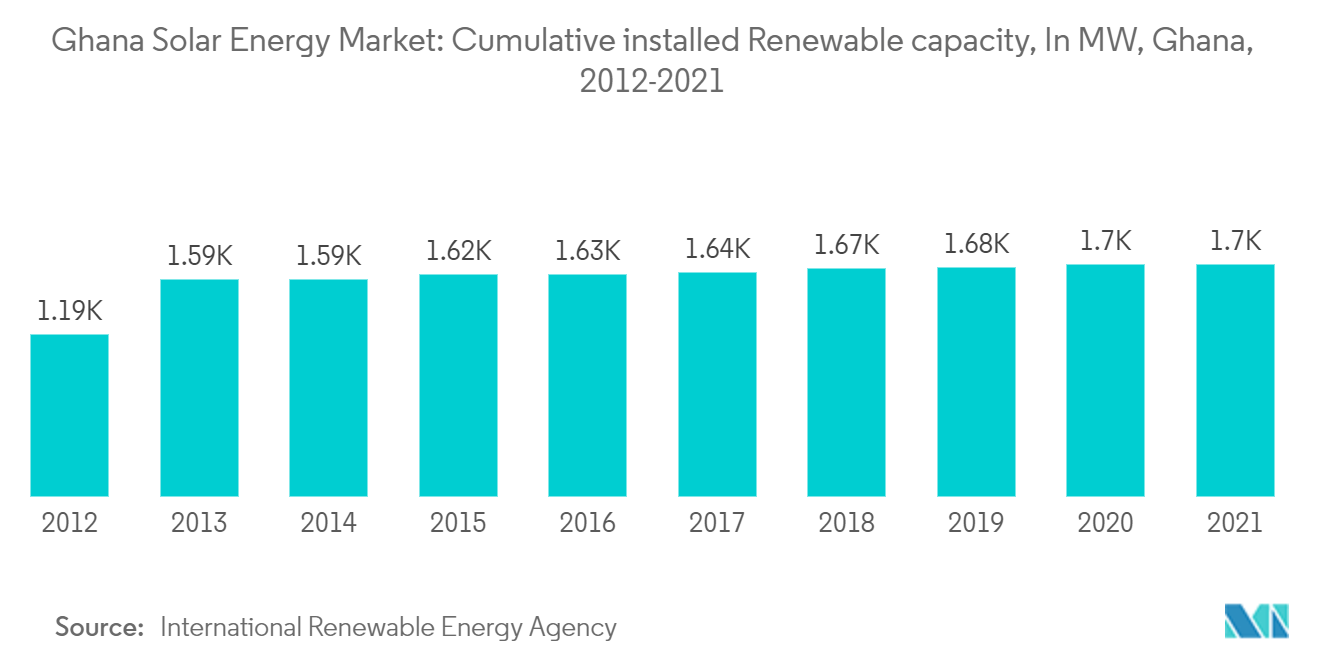Market Trends of Ghana Solar Energy Industry
This section covers the major market trends shaping the Ghana Solar Energy Market according to our research experts:
Rooftop Solar Expected to Dominate the Market
- Rooftop solar PV is a photovoltaic system with electricity-generating solar panels mounted on the rooftop of a commercial or residential building. It captures the sun's light energy and converts it into electrical energy.
- In the residential and commercial & industrial (C&I) segments, solar power is often generated by end users deploying rooftop solar photovoltaics (PV). Solar PV systems for power generation are installed on rooftops of houses and commercial buildings or industrial plants that use the energy. Excess energy produced by individual owners is sometimes sold to power companies.
- A rooftop solar PV system is smaller than ground-mounted solar PV power stations, with capacities in the megawatt range. Rooftop solar PV systems on residential buildings typically have a capacity of up to 20 kilowatts (kW), while those mounted on commercial or industrial buildings often reach 100 kW or more.
- The rooftop solar PV has witnessed much adoption in recent years in the country owing to rising environmental concerns, favorable government policies, declining solar PV installation costs, and increasing panel efficiencies. This is likely to continue and support market growth over the forecast period.
- The government of Ghana announced the solar rooftop program in 2015, with the primary objective of reducing peak load by 200 MW by utilizing solar PV technology on the national grid in the medium term. As part of the initiative, the Energy Commission was tasked with facilitating the installation of 20,000 rooftop solar PV systems in residential facilities (homes) under a capital subsidy scheme in 2016. The initiative provides qualified beneficiaries with capital subsidies in two forms: cash payments or the supply of actual solar panels after the beneficiary has purchased and installed the necessary balance of system (BoS) components (such as an inverter, batteries, and charge controllers) to complete the solar PV system. Each beneficiary is entitled to a maximum of 500 W of solar panels. Several commercial banks have expressed interest in providing loan facilities to interested beneficiaries for the procurement of BoS components for solar PV systems of their choice.
- As a result of recent growth, Ghana's installed solar energy capacity increased to 108 MW in 2021 from 3 MW in 2013.
- The African Development Fund will provide a USD 27.39 million grant to help Ghana improve energy access and decarbonization by developing renewable energy mini-grids and solar PV net metering. With the help of this grant, Ghana will install 35 mini-grids and solar PV systems in 400 schools, 200 units in healthcare facilities, and 100 units to provide community energy services in the Volta region. As part of the grant, public institutions, small and medium-sized businesses, and selected households will be able to install 12,000 rooftop net-metered solar PV systems. Under the Ghana Mini Grid and Solar Photovoltaic Net Metering Project, the grant will be used to install capacities of up to 67.5 MW.
- Owing to the above factors, the rooftop solar PV segment is likely to dominate the solar energy market in Ghana during the forecast period.

Supportive Government Efforts to Reduce the Reliance on Fossil Fuel-based Power Generation
- Ghana is a leading investor in renewable energy because of its abundant biomass, solar, wind, and hydropower resources.
- Ghana's government has actively promoted the use of renewable energy sources to reduce its dependency on fossil fuels. For instance, the government passed the Renewable Energy Act in 2011 (Act 832), which assists in developing and utilizing renewable energy resources and investments.
- As a result of recent growth, Ghana's installed renewable capacity increased to 1700 MW in 2021 from 1180 MW in 2012. Among this capacity, 108 MW is derived from solar energy.
- Ghana Energy Development and Access Project (GEDAP) is part of the SE4ALL Action Plan. It is a multi-donor-funded project that aims to increase the efficiency of Ghana's distribution system and reduce greenhouse gas emissions. IDA, the African Development Bank (AfDB), and Africa Catalytic Growth Fund (ACGF) are donors to this project.
- In November 2021, the Ghana government reaffirmed its commitment to renewable energy and Sustainable Development Goal Seven (SDG7) with Bui Power Authority (BPA), which planned to build eight solar plants in the north of the country. The potential solar plant capacities of these spots range between 10 MWp and 100 MWp, which could be successfully integrated into Ghana's National Interconnected Transmission System (NITS).
- Owing to the above points, supportive government policies are expected to drive the country's solar energy market during the forecast period.


